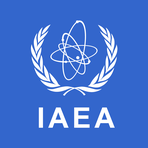The Nuclear Tightrope: Iran and the U.S. in Negotiation
May 23, 2025, 11:39 pm

Location: Austria, Vienna
Employees: 1001-5000
Founded date: 1957
The stage is set. The fifth round of nuclear negotiations between Iran and the United States unfolds in Rome. The stakes are high, and the tension palpable. Enrichment is the heart of the matter. It’s a game of chess, where each move could lead to a checkmate or a stalemate.
The talks aim to limit Iran’s nuclear ambitions in exchange for lifting economic sanctions that have suffocated its economy. For nearly fifty years, the U.S. and Iran have danced around each other, a tango of mistrust and hostility. The backdrop is a history marred by conflict, revolution, and broken promises.
Former President Trump has been a vocal player in this drama. His threats of airstrikes loom large over the negotiations. The message is clear: if diplomacy fails, military action could follow. Iran, on the other hand, has warned that it could pursue nuclear weapons if pushed too far. The stakes are not just political; they are existential.
A recent report from the U.S. Defense Intelligence Agency paints a troubling picture. Iran is not currently building nuclear weapons, but it is preparing the ground. The time to produce weapons-grade uranium could shrink to less than a week. Yet, experts caution that developing a functional bomb would still take months. The clock is ticking.
Enrichment levels are the crux of the negotiations. The U.S. has hardened its stance, insisting that all Iranian enrichment must cease. This is a non-starter for Tehran, which insists on maintaining its right to enrich uranium. The two sides are locked in a standoff, each unwilling to budge.
A potential compromise has been floated. A consortium of regional countries, backed by the U.S., could manage Iran’s enrichment. This would allow Iran to halt enrichment at home while still having access to uranium for peaceful purposes. However, Iran’s Foreign Ministry has dismissed this idea, insisting that enrichment must occur within its borders. Past attempts at similar arrangements have failed, leaving little hope for a breakthrough.
As the negotiations unfold, the specter of Israel complicates matters further. Israel has threatened to strike Iran’s nuclear facilities if it feels threatened. This adds another layer of tension to an already fraught situation. Iran has warned that any Israeli attack would implicate the U.S. as complicit. The stakes are not just about nuclear weapons; they are about regional stability.
Internally, Iran faces its own challenges. The economy is in shambles, with the rial plummeting to over a million to one U.S. dollar. The negotiations offer a glimmer of hope for economic relief. Yet, domestic unrest simmers beneath the surface. Protests over mandatory hijab laws and rising fuel prices threaten to boil over. The government needs a deal, but the hardliners are unwilling to compromise.
The history of U.S.-Iran relations is a tale of betrayal and mistrust. Once allies, the two nations have been locked in a bitter rivalry since the 1979 Islamic Revolution. The U.S. backed the Shah, but when he fell, so did the relationship. The hostage crisis that followed severed diplomatic ties, and the wounds have never fully healed.
The 2015 nuclear deal was a brief moment of hope. It allowed Iran to enrich uranium to 3.67% purity, a far cry from the current levels of 60%. But Trump’s withdrawal from the agreement in 2018 reignited tensions. The cycle of sanctions and threats resumed, pushing both nations further apart.
As the negotiations continue, the world watches closely. The outcome could reshape the Middle East. A successful deal might ease tensions and open the door to a new era of diplomacy. Failure, however, could lead to military conflict, with dire consequences for the region and beyond.
The path forward is fraught with challenges. Both sides must navigate a complex web of interests and fears. The U.S. seeks to prevent Iran from becoming a nuclear power, while Iran aims to assert its sovereignty and right to enrich. The balance is delicate, and one misstep could tip the scales.
In the end, the negotiations are more than just about nuclear weapons. They are about power, identity, and survival. Each side must weigh its options carefully. The stakes are high, and the world is watching. The outcome of these talks could determine the future of U.S.-Iran relations for decades to come.
As the clock ticks down, the question remains: will diplomacy prevail, or will the world be plunged into chaos? The answer lies in the hands of negotiators, each move a step closer to peace or war. The tightrope is thin, and the fall could be catastrophic. The world holds its breath.
The talks aim to limit Iran’s nuclear ambitions in exchange for lifting economic sanctions that have suffocated its economy. For nearly fifty years, the U.S. and Iran have danced around each other, a tango of mistrust and hostility. The backdrop is a history marred by conflict, revolution, and broken promises.
Former President Trump has been a vocal player in this drama. His threats of airstrikes loom large over the negotiations. The message is clear: if diplomacy fails, military action could follow. Iran, on the other hand, has warned that it could pursue nuclear weapons if pushed too far. The stakes are not just political; they are existential.
A recent report from the U.S. Defense Intelligence Agency paints a troubling picture. Iran is not currently building nuclear weapons, but it is preparing the ground. The time to produce weapons-grade uranium could shrink to less than a week. Yet, experts caution that developing a functional bomb would still take months. The clock is ticking.
Enrichment levels are the crux of the negotiations. The U.S. has hardened its stance, insisting that all Iranian enrichment must cease. This is a non-starter for Tehran, which insists on maintaining its right to enrich uranium. The two sides are locked in a standoff, each unwilling to budge.
A potential compromise has been floated. A consortium of regional countries, backed by the U.S., could manage Iran’s enrichment. This would allow Iran to halt enrichment at home while still having access to uranium for peaceful purposes. However, Iran’s Foreign Ministry has dismissed this idea, insisting that enrichment must occur within its borders. Past attempts at similar arrangements have failed, leaving little hope for a breakthrough.
As the negotiations unfold, the specter of Israel complicates matters further. Israel has threatened to strike Iran’s nuclear facilities if it feels threatened. This adds another layer of tension to an already fraught situation. Iran has warned that any Israeli attack would implicate the U.S. as complicit. The stakes are not just about nuclear weapons; they are about regional stability.
Internally, Iran faces its own challenges. The economy is in shambles, with the rial plummeting to over a million to one U.S. dollar. The negotiations offer a glimmer of hope for economic relief. Yet, domestic unrest simmers beneath the surface. Protests over mandatory hijab laws and rising fuel prices threaten to boil over. The government needs a deal, but the hardliners are unwilling to compromise.
The history of U.S.-Iran relations is a tale of betrayal and mistrust. Once allies, the two nations have been locked in a bitter rivalry since the 1979 Islamic Revolution. The U.S. backed the Shah, but when he fell, so did the relationship. The hostage crisis that followed severed diplomatic ties, and the wounds have never fully healed.
The 2015 nuclear deal was a brief moment of hope. It allowed Iran to enrich uranium to 3.67% purity, a far cry from the current levels of 60%. But Trump’s withdrawal from the agreement in 2018 reignited tensions. The cycle of sanctions and threats resumed, pushing both nations further apart.
As the negotiations continue, the world watches closely. The outcome could reshape the Middle East. A successful deal might ease tensions and open the door to a new era of diplomacy. Failure, however, could lead to military conflict, with dire consequences for the region and beyond.
The path forward is fraught with challenges. Both sides must navigate a complex web of interests and fears. The U.S. seeks to prevent Iran from becoming a nuclear power, while Iran aims to assert its sovereignty and right to enrich. The balance is delicate, and one misstep could tip the scales.
In the end, the negotiations are more than just about nuclear weapons. They are about power, identity, and survival. Each side must weigh its options carefully. The stakes are high, and the world is watching. The outcome of these talks could determine the future of U.S.-Iran relations for decades to come.
As the clock ticks down, the question remains: will diplomacy prevail, or will the world be plunged into chaos? The answer lies in the hands of negotiators, each move a step closer to peace or war. The tightrope is thin, and the fall could be catastrophic. The world holds its breath.
